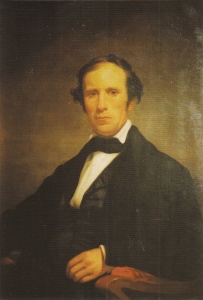Welcome to Wednesday. Also, Welcome to August. Another year is slipping through our fingers, so hold on tight to your memories. Share a few here while you have the chance.
Catching up on some July photos, I returned to Scranton from RailCamp on July 1. The next day, I set up trackside to shoot the Steamtown trains. The Steamtown Runner track, part of the former Delaware Lackawanna & Western Railroad is being replaced to the yard limits. The tamper machine and hi-rail track truck sit on the newly laid rails. It was Sunday, so no track work was underway.
The stately 110 year old train station of the DL&W makes for a terrific backdrop of any of the trains.
The excursion train to Gouldsboro passes the station and the truck pass by a little after 11:30.
Shortly after that, the steam powered Scranton Limited, which also departs at 11:30 passes the same spot.
Trainman Peter Stenzhorn and conductor Tom McNamara watch behind the train to check on the track work.
The following Saturday, our train ran on the former Delaware & Hudson RR to a little town called Archbald, which was at the nexus of 6 coal railroads. This is a new concept trip for Steamtown, delving into the history of the region beyond our normal excursions.
Local historians Domenick Keating and Bernie McGurl discussed with the riders aboard the train the various anthracite collieries that served the different railroads. On the far right is Owen Worozbyt, who is part of the Lackawanna Heritage Valley Authority, in reclaiming the rail lines for use as nature trails.
The group assembles at the destination of Archbald, where the remains of the Gravity Slope colliery are being preserved, and even restored. There is very little left, however.
One of the few stable buildings is this machine shop, which is going to be the museum for better explaining and understanding the remnants.
Trout Unlimited spokesman told of how the Lackawanna River, which most of the railroads followed, is becoming habitable for a variety of fish again. From the first settling of the area by Europeans in the mid 1800s until the 1970s, the river was a catch basin of waste from the mines and other industry.
A tour along the former New York Ontario & Western Ry line, which is now the hiking trail, pointed out the various plants along the way. Very few are native to the region. Many were brought by the English, and there is also the Japanese knotweed, which is very invasive.
This building is the wash house, where men arriving to work in the mines would change from their home clothes to their work clothes before descending into the mines. The train is ready for re-boarding.
That is my contribution for the week. Thanks to all who regularly share their pics, or even if you only share once in a while. It is still an interesting railroad world out there, so please feel free to make this thread yours.






























